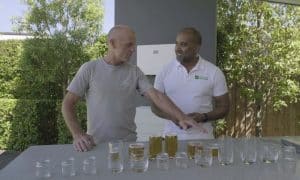When it comes to renewable energy, you can ask almost anybody on the street, and they would be aware of solar power. Most people would be aware of energy produced by wind farms as well. Hydropower dams are also a common form of renewable energy and have been constructed worldwide for decades.

On the more obscure end, there is tidal energy. The power of tidal energy is immense, but it’s also predictable. Unlike wind or solar, which can be interrupted by weather conditions, tidal waves are always there – day in and day out. That means we can rely on this clean source for our electricity needs without worrying about disruptions. That is when the technology becomes more affordable and widely available.
Have you heard of geothermal energy? This form of renewable energy is generated by tapping into the natural heat below the earth’s surface, which means it’s a clean and reliable source of power.
Dominating the news lately has been green hydrogen. It’s made by splitting water into oxygen and hydrogen gas using electricity. The hydrogen gas can then be burned to release energy. This process produces only water vapour as the main byproduct. Green hydrogen can even be used to create steel without the use of coal.
It is a shopping list of quality renewable energy sources being used and researched globally as we speak. But they are not the only ones under the microscope.
Another source of renewable energy is beer. Not just any beer, but the stale, gross beer tipped down drains by the bucketful at every bar, nightclub and restaurant in the country. Breweries also waste enormous volumes of the amber liquid, while ongoing lockdowns caused by COVID-19 have meant millions of litres of stale beer has gone to waste as well.
One Australian university took careful notice of this and is now using this waste beer to create a potentially powerful new form of renewable energy.
Beer to biogas: how your favourite drop could power your home
South Australia’s SA Water’s Glenelg Wastewater Treatment Plant discovered that beer could be used to create biogas, but not on its own. This is where the story takes a shocking (and slightly unpleasant) turn. The stale beer needs to be combined with sewerage to create the biogas that can be used to generate electricity.
What is biogas? Biogas is an alternative fuel typically derived from the decomposition of organic matter in landfills or digesters. It is a mixture of gases produced by organic matter in the absence of oxygen, primarily consisting of methane and carbon dioxide and can be made from raw materials such as agricultural waste, manure, municipal waste, plant material, sewage or food waste.
The process entails discharging the beer into the site’s digester tanks and mixed with sewage sludge. The biogas created from this mixture is then used to feed gas engines and produce electricity for the site.
SA Water senior manager of production and treatment Lisa Hannan said the beer produced significantly more energy than sewerage alone.
“We’ve accepted around 150,000 litres of beer each week … which would be the equivalent of powering around 1,200 houses,” she said.
“The beer is a really great waste to add into our digester because it has such a high energy value to it. That waste would normally have a greater impact to the environment.
“It’s a win for SA Water because and our customers because we can reduce our costs by generating our own electricity, and it’s a win for industry because it reduces their disposal and treatment costs.”
So why is beer so effective at producing energy?
The process of creating biogas is not as simple as tossing waste into a compost bin. Instead, it involves a complex and calculated method called anaerobic digestion, where microorganisms break down biodegradable material without oxygen.
The management of heat and pH for maximum methane yield is an integral part of the process, and it is a delicate balancing act that can be difficult to manage and control. However, this same balancing act is used in brewing beer, which means brewers already possess the skills and equipment to handle this biological process.
Beer also produces an enormous volume of heat during combustion, making far more biogas than other organic materials.
The combination of COVID-19, large volumes of wasted beer and the fact that beer lends itself perfectly to biogas generation created the perfect storm in 2020 where the popular alcoholic drink potentially unlocked the world’s latest, affordable form of renewable energy.
The cost of technologies and the fickle nature of turning organic materials into biogas have held back this form of renewable energy in the past. However, beer has perhaps unlocked the way forward for biogas to reach the mainstream.
Call us today on 1800 EMATTERS and get a quick quote. You can also email our friendly team for expert, obligation-free advice.






































